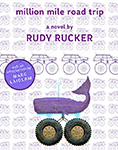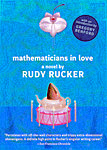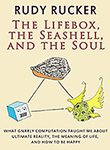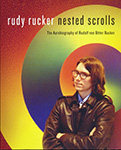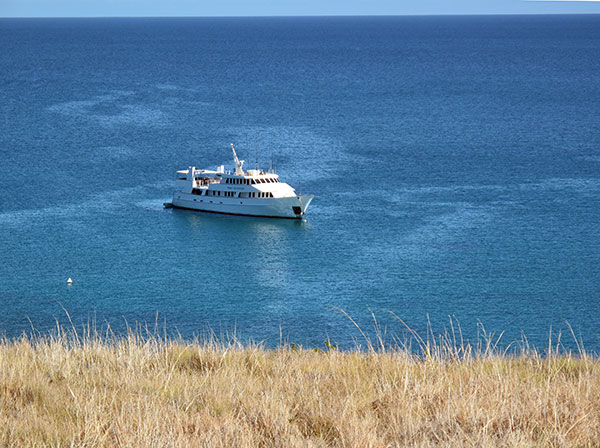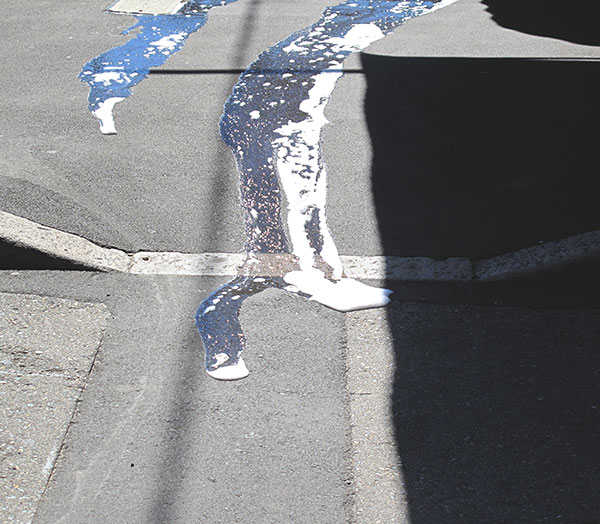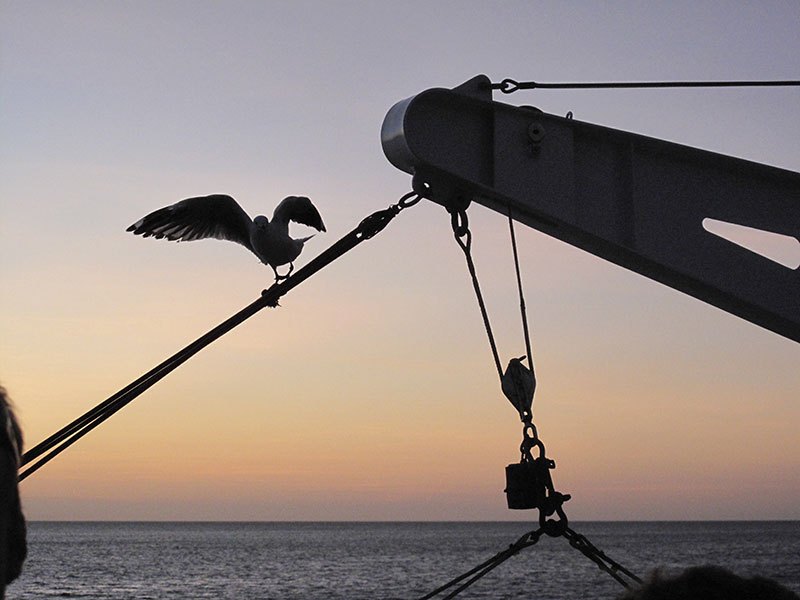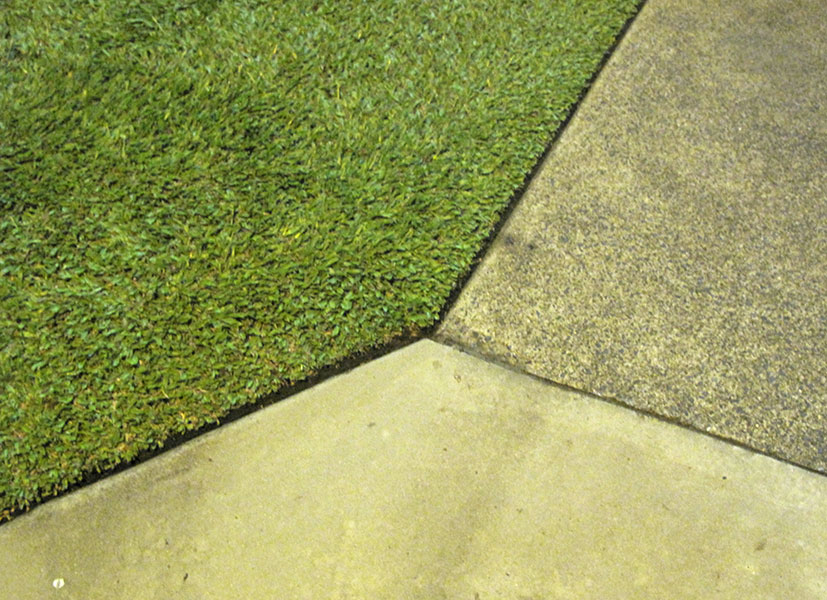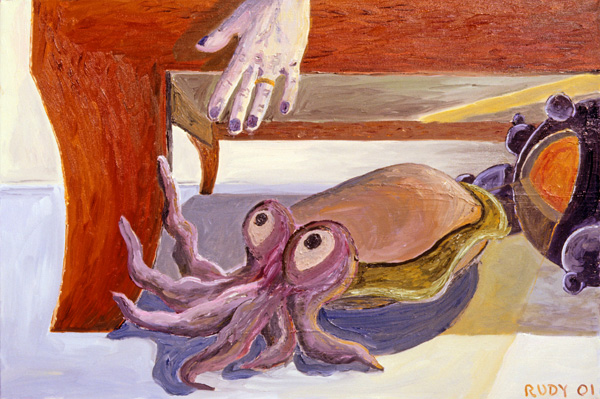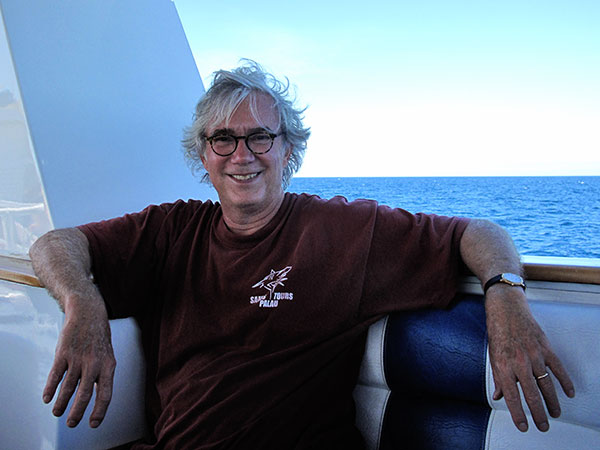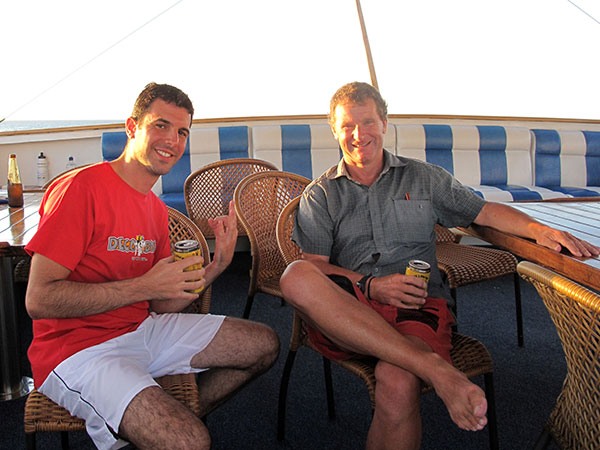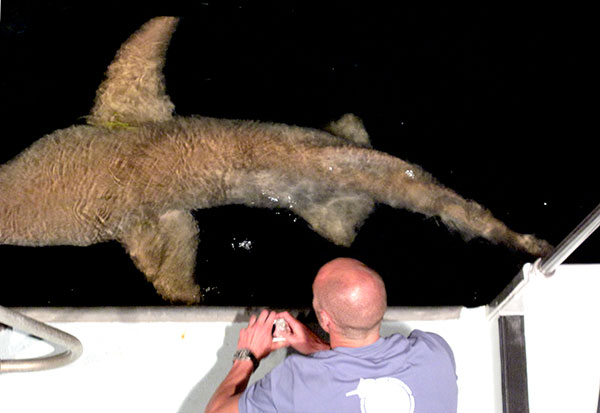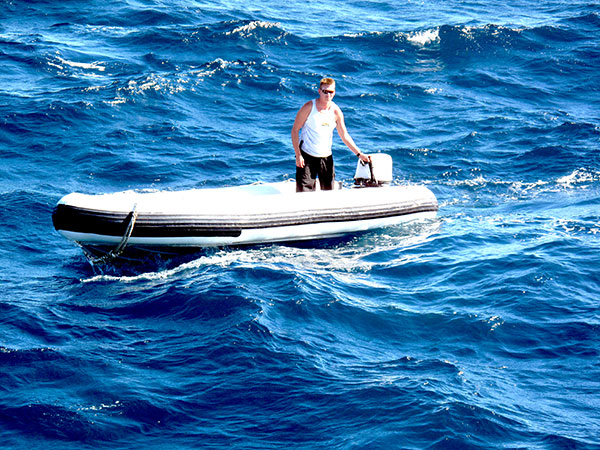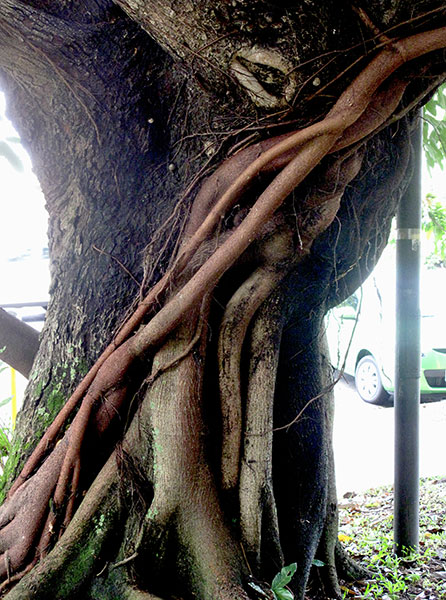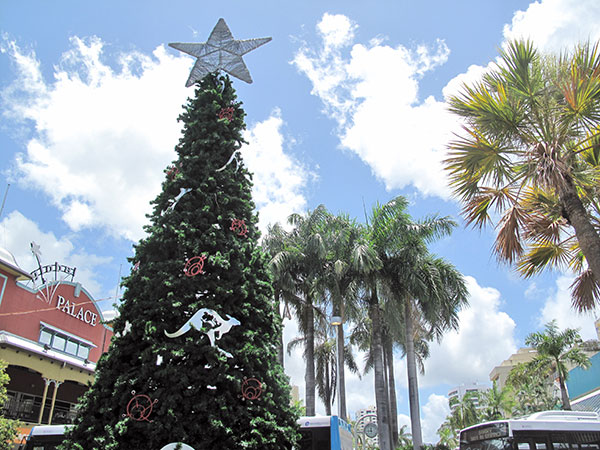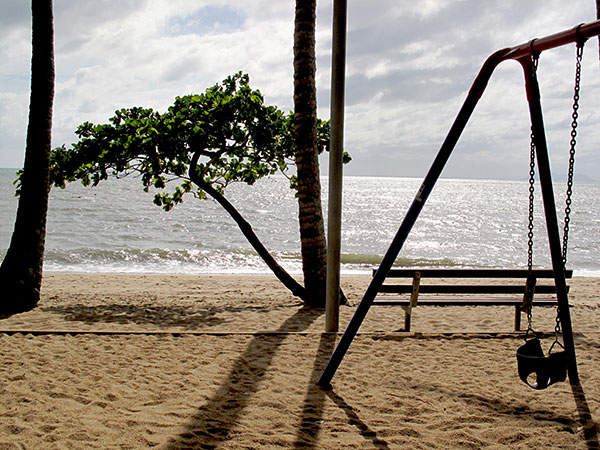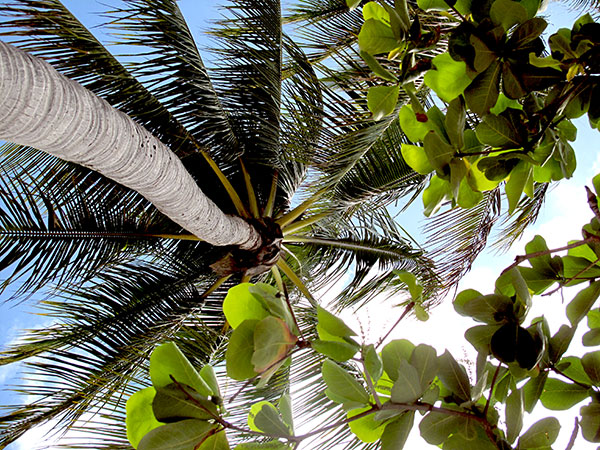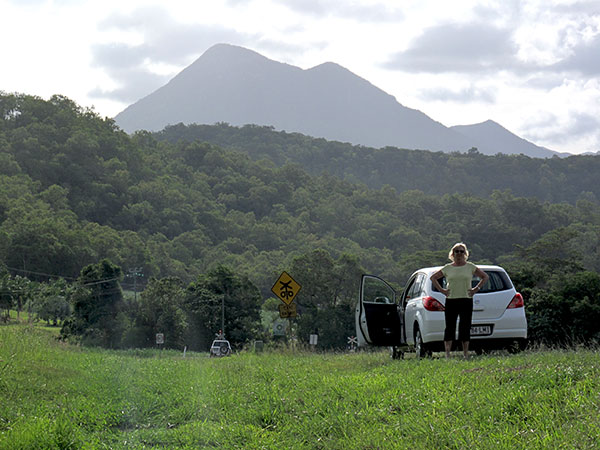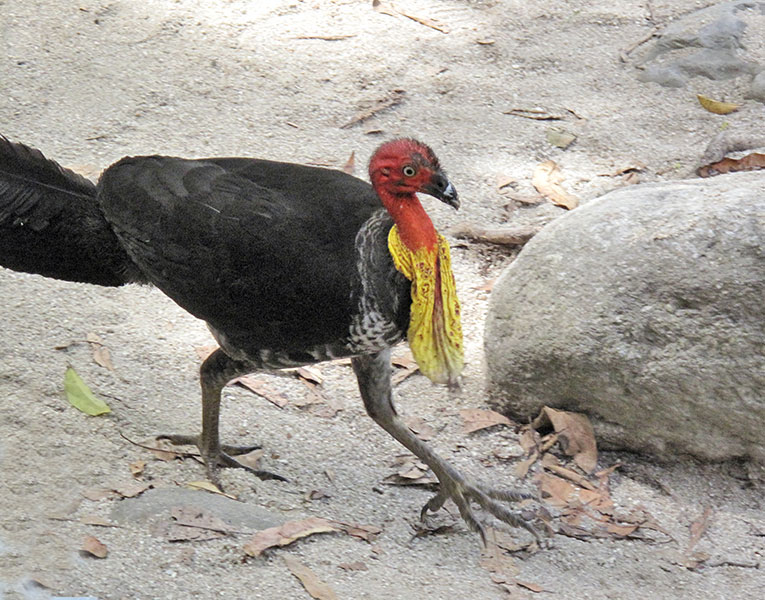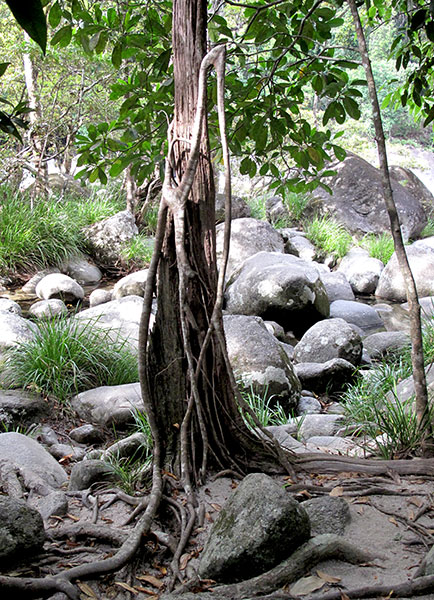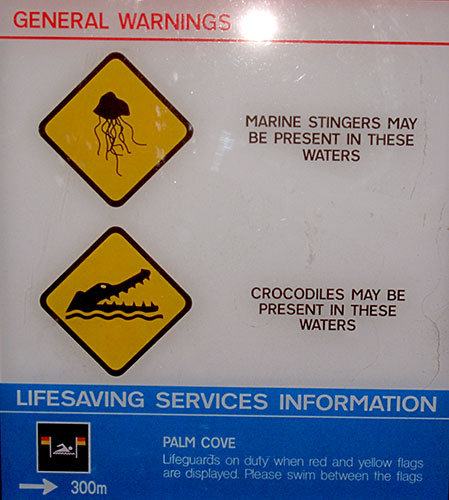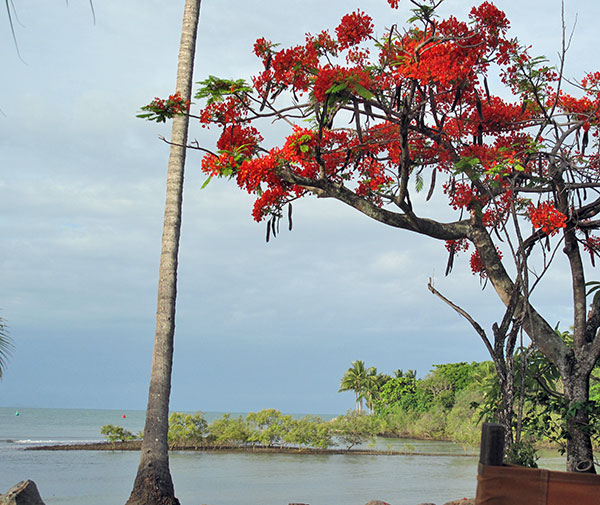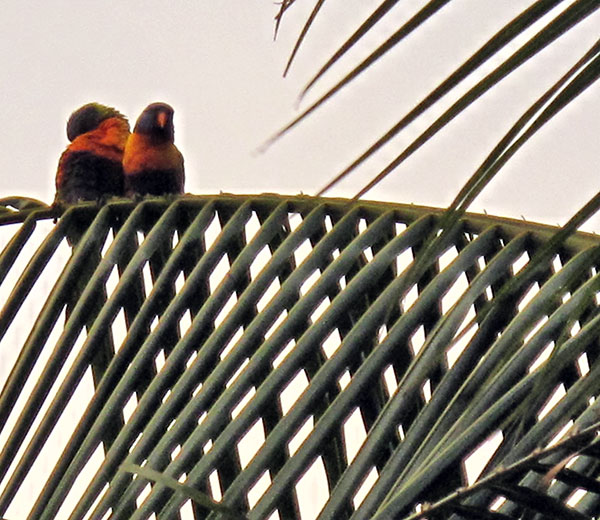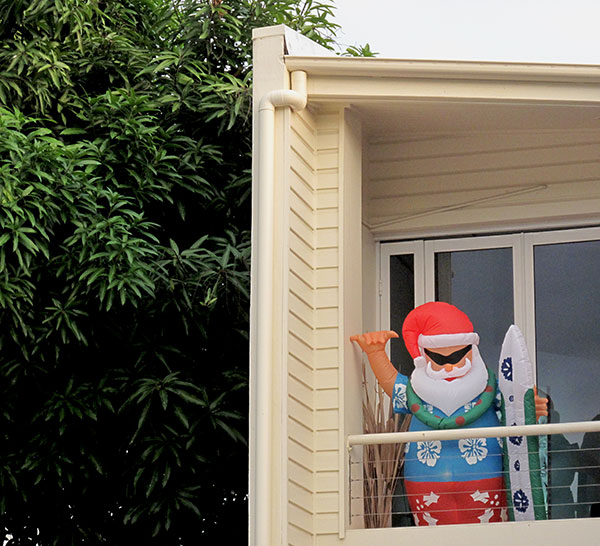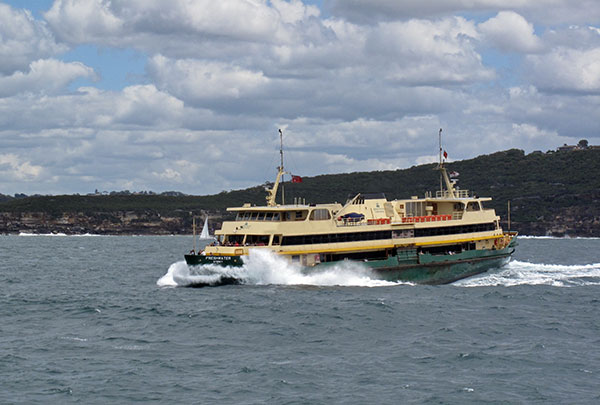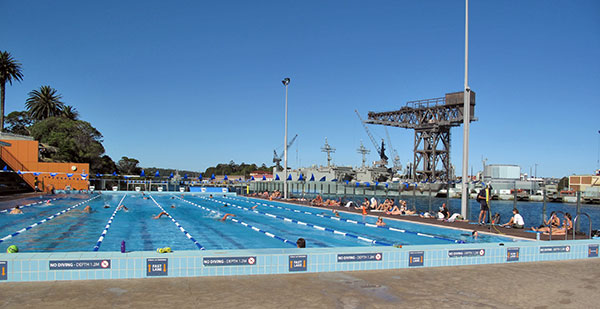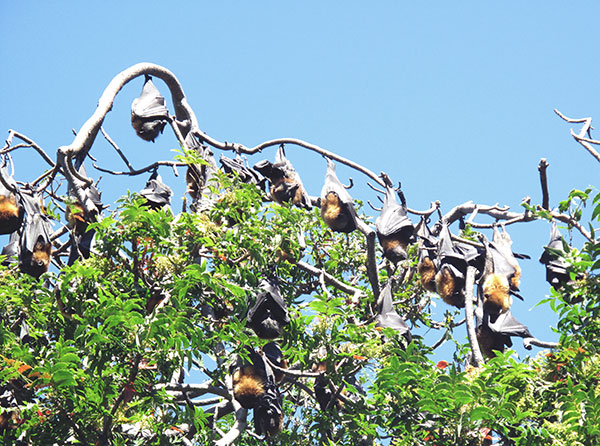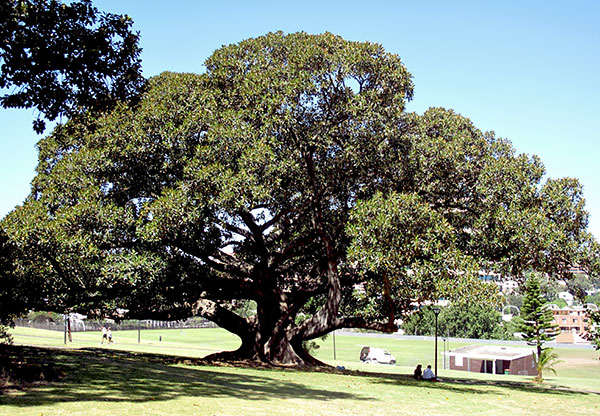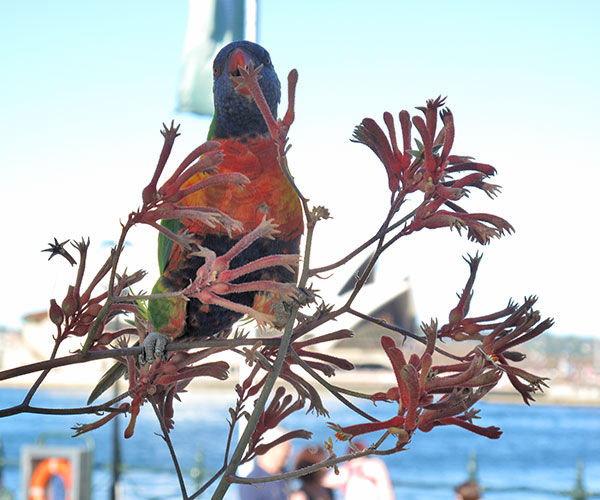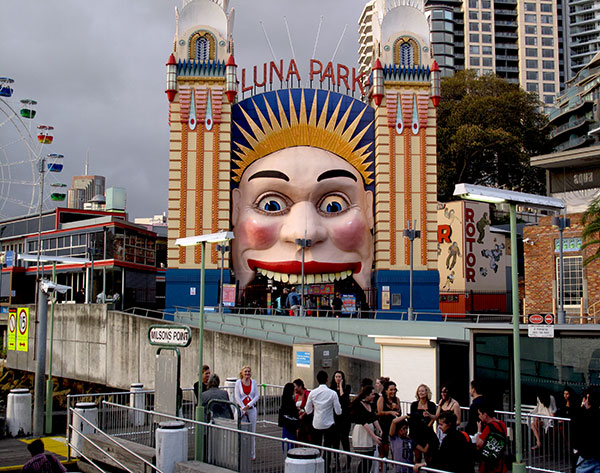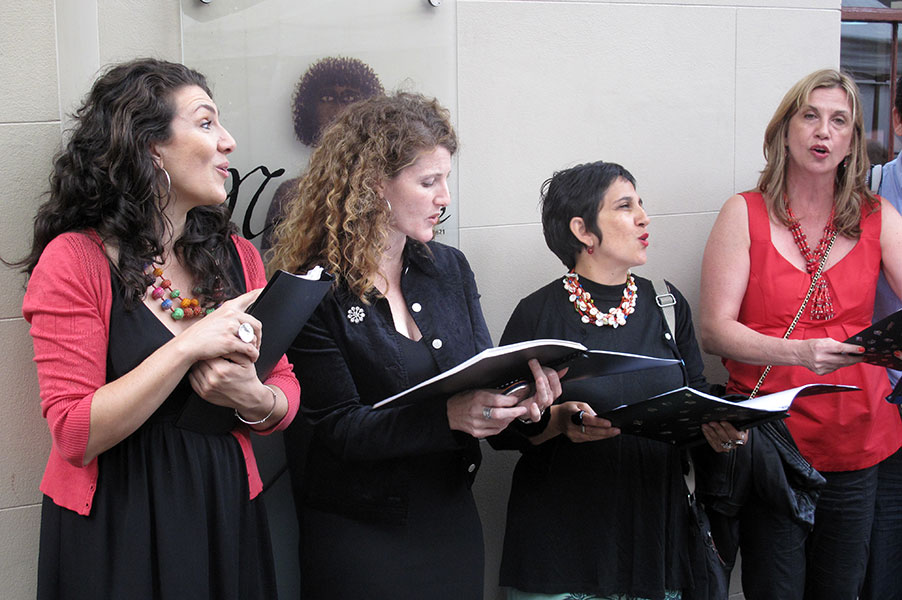[This is my last post about our Australia journey.]
After the dive trip, they dropped us on Lizard Island, a largely deserted spot that has an airstrip, a small and posh $1000-a-night resort, and a $10-a-night campground. The first European to live on Lizard Island was a guy called Watson who was trying to make a living by harvesting “beche de mer” or sea cucumbers, to be sold in the Far East. Any edible thing that’s shaped at all like a penis has always been culinary gold—consider also the stiff quills within shark fins and the horns of rhinos. Not that you’d really want your penis to look like a sea cucumber…
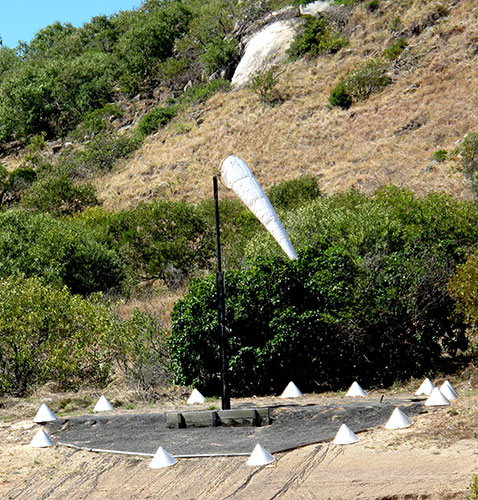
[The totality of the airport control equipment on Lizard Island is a windsock.]
We hiked through some bush to get to the deserted asphalt airstrip. The hike was nice, a touch of the real Australia, all weird plants and red rocks, with the sun implacably beating down and our bodies bathed in sweat.
I saw a three or four foot long lizard amid the scrubby rocks. The lizard was shy, and went to hide beneath a rock. Trying to make conversation with a Japanese diver woman who spoke no English, I pointed to the lizard. “Godzilla eat Tokyo!” She brightened up at the name of the city, understanding only that. She pointed to herself. “Kyoto!”
And then we flew back to Cairns in a tiny plane, low above the water. After all the intensive diving, I felt a little dizzy and off-kilter, it would be several days until my ears really felt clear and normal again. I didn’t sleep very well on the boat, perhaps because of the overeating. And I think I caught a bit of a cold from a Perky-Pat-like woman who’d cough across the table all during breakfast.
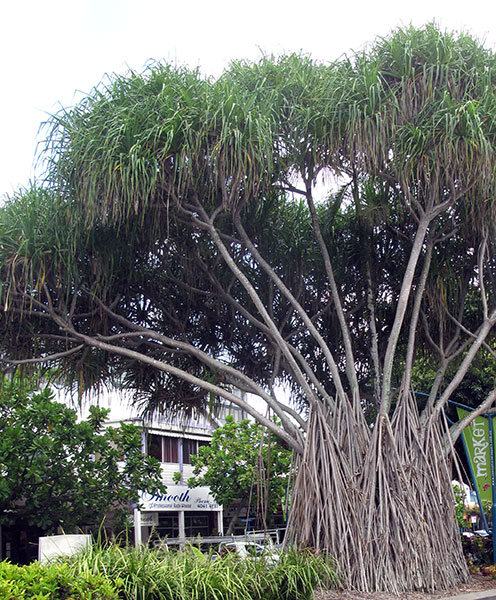
[A “curtain fig tree” in Cairns.]
And we spent the last two nights in Cairns, just killing time and soaking up some more Australian vibes. We considered making another excursion from there, but we were too tired and, as it turned out, just hanging around Cairns was fairly interesting.
One night we walked into a random live performance in an art center near our hotel, and they were doing a freak show, kind of like they do in San Francisco—eating razor blades, putting their elbows into bear traps, shocking themselves with a car battery, standing on the belly of a dwarf woman who’d arched herself into a bow above a bed of nails. But it came across more like a high-school talent show than like something really edgy.
It was gray, drizzly, and over 100 degrees each day. I rented a bike and rode along the waterfront both days. It was so hot that it didn’t matter if it rained on me.
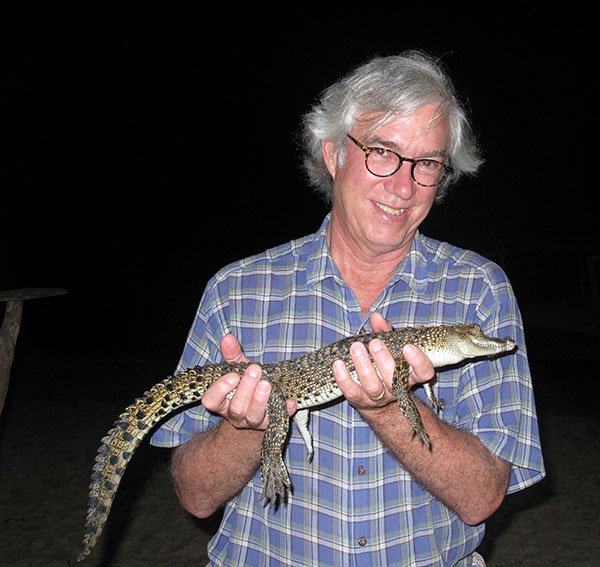
[Me with a young crocodile, much warmer and softer than expected.]
Cairns is on a mud flat that’s in fact inhabited by crocodiles, so they don’t really have a beach. Instead they have a nice strip of park by the water, about a mile long, and a giant wading pool for kids to play in, the biggest shallow pool you ever saw, at least an acre in size.
At the north end of the waterfront, the mangroves start up, totally dense, and full of birds. I saw a kind of white pelican with a long sharp beak, a nice-looking bird. At the south end, there’s a yacht harbor and then some docks for heavy-duty ships that included an oil tankers. I liked riding around that part, it felt, once again, like I was closer to the “real Australia.”
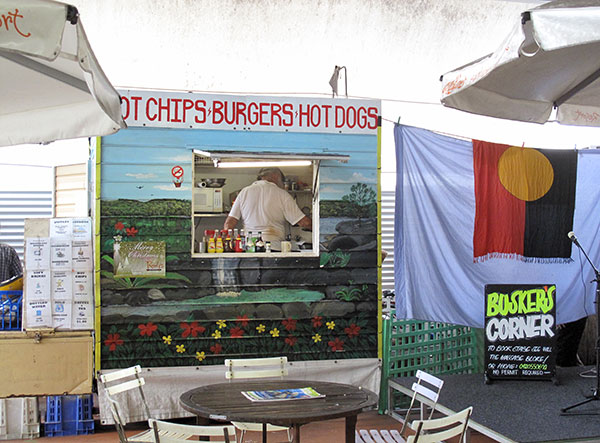
[Burger stand by a big open market in Cairns. That flag on the right is the Aboriginal flag.]
I bought a nice Aboriginal-made boomerang. I’ve had a thing for boomerangs ever since I sent in my savings to buy one from an ad in Boy’s Life magazine fifty years ago. We saw a great fruit and vegetable market with lichees, durians, star fruit, multiple varieties of mango, and a tusk-like ten-pound vegetable that turned out to be a single bamboo shoot.
A fair number of Aboriginal people live around Cairns—I didn’t really see any of them at all in Melbourne or in Sydney, other than the guys selling didgeridoos on the Circular Quay in Sidney. I sat for awhile in the Cairns town square near the bus station, digging the Aboriginals. The ones who noticed me were quite friendly, although it was more common that I was pretty much invisible to them.
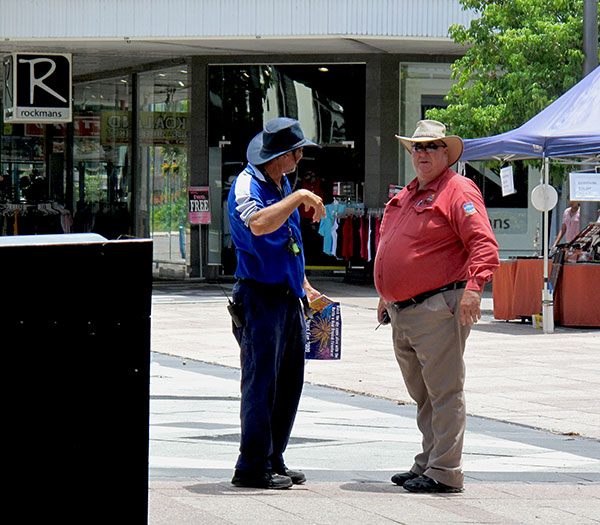
[Cairns security guards.]
One couple was having a prolonged argument, a man and a woman, a yelling match, the woman saying, “You don’t know me.” As if by prearranged signal, they stopped quarrelling and walked off just before a couple of security guards appeared. Down near the water I saw a number of Aboriginal families having picnics.
The heat was killing me, a really shocking temperature, maybe 105 by noon. The outdoor cafes have rows of fans swirling beneath their awnings. I went back to the hotel and sat in the lukewarm water of the pool reading Henry Miller’s collection, The Cosmological Eye—an old edition I happened to pick up during my travels.
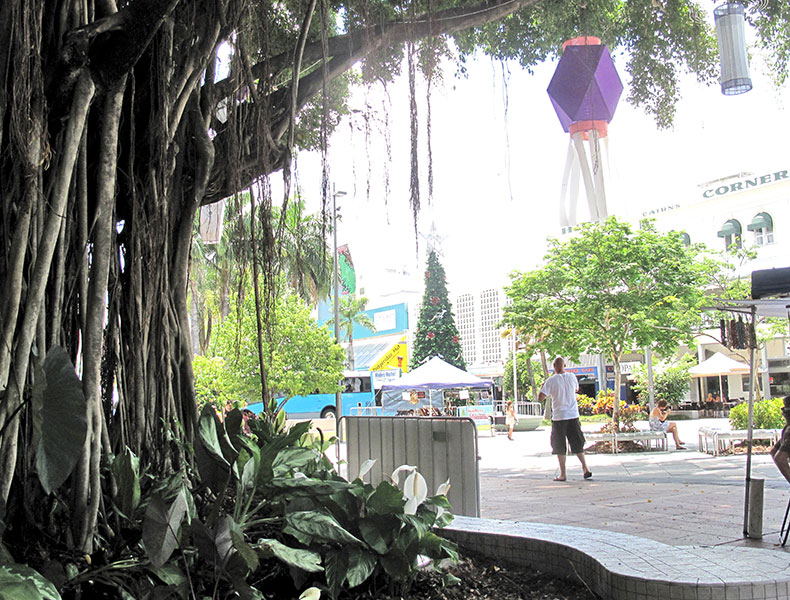
There was a holiday vibe in the air, and the town’s slogan was “SumMerry Christmas.” They had a big Christmas tree decorated with images of kangaroos—I showed a close-up image of it in an earlier post. Speaking of roos, I never did get to see a big mob of kangaroos in person like I’d hoped. I think I mentioned that the ones we saw in the zoo near Melbourne were rolling on their backs and scratching like dogs. I did see, on the TV in the hotel room, a kangaroo hopping across the fairway of the Australian Open golf tournament.
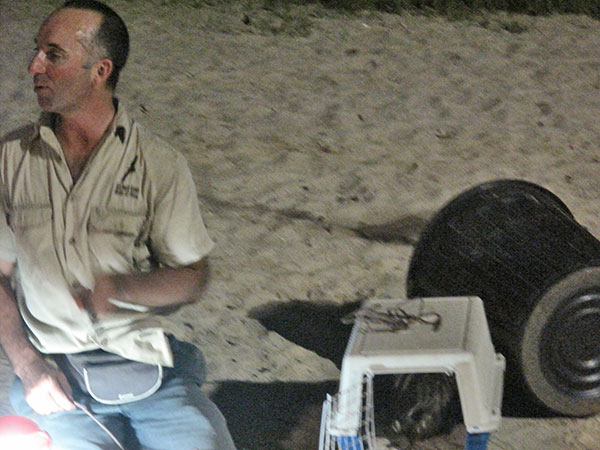
[Menagerie man in Cairns.]
One the very last evening we saw a guy—either he was a park ranger or an eccentric street performer—doing a kind of show down by the water. He showed us a quoll, which is one of three carnivorous marsupials native to Australian continent, the other two being the Tasmanian devil and the Tasmanian tiger.
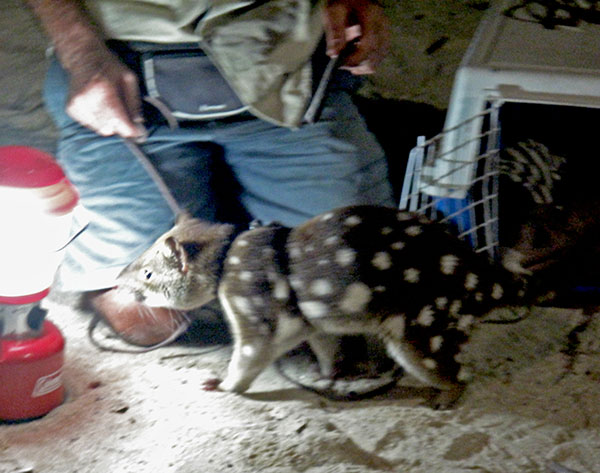
[A quoll.]
The quoll is a little bit like a cat—but not much like a cat—it has a triangular head with a prominent snout. Note that a quoll is not at all similar to the teddy-bear-like koala, even though the name sounds somewhat the same. The quoll’s fur was dark brown with big white spots, and, as we watched, the keeper fed this guy a rat, a piece of chicken, and the tip of a kangaroo tail. The quoll was all business, very self-possessed, he paid little attention to us gawkers.
For a final treat, the animal impresario produced a two-foot-long baby crocodile for us to hold and pose with (photo appears earlier in this post). The poor little guy’s mouth was taped shut. But I was happy to touch him—he was smooth and slightly warm, soft and supple. Maybe I can put a crocodile into that novel I was working on before I left—Jim and the Flims .
Farewell, antipodes!


